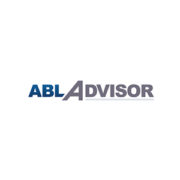To view the original article, click here.
By James Cassel
September 21, 2014

James Cassel
Technological innovations are enhancing the way that middle-market companies do business and creating significant opportunities for growth.
Recent data from Deloitte’s 2014 second-annual mid-market technology survey show that middle-market businesses are increasingly recognizing the pivotal role that technology can play. Cloud-based solutions and business analytics tools that provide “large corporation solutions” are credited for their ability to enhance operational capabilities, boost productivity, and provide competitive insights, according to the survey results. The continuing reductions in cost have made them more affordable to the middle market and have been a great catalyst in adoption rates.
Key survey findings include:
▪ 50% of the executives surveyed say their companies are currently using or migrating to cloud-based solutions
▪ 41% say their leadership now perceives technology as a “critical differentiator and key to growth,” and an additional 38 percent view it as “a strategic investment”
▪ 58% say their company is spending more or significantly more on technology in 2014, compared to 45% in 2013 (signs of a growing economy)
▪ 36% are allocating at least half of their IT budgets to new technology rather than maintaining current systems
▪ More companies are using data analytics to better understand their business metrics and to improve marketing to customers
A growing number of businesses – particularly those controlled by young entrepreneurs and startups – are leading the pack in embracing the new solutions and technologies. However, many businesses run by older individuals, who may not be as familiar or comfortable with some of these technologies or who might be more resistant to change, are still hesitating to adopt them. If you own a middle-market business, it would be wise to keep a close pulse on new technologies that will enhance your company’s profitability or output.
Accounting, for example, has been revolutionized by simple software. Everything from basic programs like QuickBooks to more complex enterprise-scale solutions means fewer labor hours, fewer mistakes, and more effective cash flow management and management reports.
Customer relationship management technologies such as SalesForce have made it easier to track, tag and manage contacts, leads, customers, vendors, and other relevant business relationships. Many of these platforms have opened up third-party application marketplaces to accommodate thousands of integrative technologies so businesses can manage and measure data from a plethora of sources.
Perhaps most noticeably, Web presence has been greatly enhanced, particularly for the middle market. Much more than the boring, pixelated internet brochures or online catalogues of yesteryear, websites are now capable of acting as central hubs for businesses’ information as well as e-commerce. It’s easier than ever to interface with customers, manage customer support, automated marketing, ordering, invoicing, shipping and much more.
I remember when a robust website could easily cost more than $10 million dollars. Today you can build that same website in a fraction of the time at a fraction of the cost.
Technological solutions for operational logistics have pushed productivity and efficiency to new heights as vendors like FedEx and UPS and even the US Postal Service offer systems to optimize global supply chains. These logistics also address hidden demons like customs, compliance and shipment monitoring.
Further, the device revolution has yielded an app for virtually everything. Medical professionals use tablets to chart notes and access patient records. Sales representatives and insurance agents can now process orders and claims in real-time. And processes including invoicing, security and marketing can be managed with the push of just a few buttons. I can even control my home air-conditioner from my iPhone, thanks to Nest.
Finally, scalable human resources and employee-management solutions like Paychex and ADP have freed business operators, enabling them to dedicate more time to running their businesses and spend fewer hours processing payroll, negotiating benefits packages, or investing in complicated customized HR dashboards.
But implementing technology to scale growth is not without its challenges and must be done strategically to ensure success and maximize return on investment with the least amount of interference. There are many technological solutions and vendors on the market, and it’s important to wade through the hype to determine what technologies will best support the needs of your business.
It’s no secret that technology, particularly web technology, carries the threat of security breaches. It seems that every week a new leak, hack or virus is plaguing businesses and creating crises of compromised – and sensitive – data.
Look at the recent problems of Target and Home Depot. According to the Deloitte survey, approximately one-third of respondents are concerned about the security of the data and services provided by cloud-based solutions. Clearly, no business needs a security scandal. Before you implement any solutions, conduct a thorough audit of what information you will be exposing to or through the technology, and what security you have in place.
Next, you should decide if you will use off-the-shelf solutions or a custom system built from the ground-up specifically for your business needs. Although custom solutions can be costly, it’s important to keep in mind that using solutions that do not entirely meet your needs could be costlier in the long run. The best solution may be an off-the-shelf solution that you customize to your specific needs.
Without a doubt, it is no small task to identify where and how you might benefit the most from these new solutions, or who the best providers would be for your particular needs. According to the Deloitte survey, 25% of executives agree it’s hard to keep up with the rapidly changing technology landscape.
Rather than trying to tackle something that might not be within your expertise, get advice from consultants who keep abreast of the latest innovations and have the knowledge and experience to assess your business needs. This can help ensure that you chart the best course for your business and put it in the strongest position for continued growth. Like most business initiatives, this takes a commitment of time, money and resources.
James Cassel is co-founder and chairman of Cassel Salpeter & Co., LLC, an investment-banking firm with headquarters in Miami that works with middle-market companies. www.casselsalpeter.com
 Cassel Salpeter & Co. a Miami-based mid-market investment banking firm.
Cassel Salpeter & Co. a Miami-based mid-market investment banking firm.









